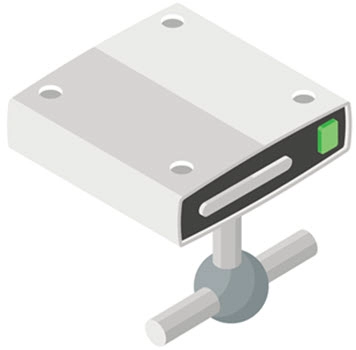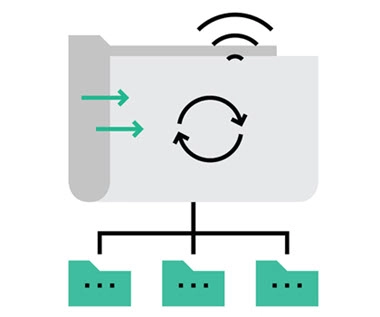Health Information Compliance Alert
Prioritize Remote Accessibility With a Shared Drive
Find out how HIPAA factors into the IT equation.
During the pandemic, remote and hybrid work have become more common for jobs where responsibilities allow being outside the office, and that’s true even in the healthcare industry. That’s why it’s a good idea to maximize organization and offer your staff greater accessibility to online resources. Read on for the details.
“A shared drive is a resource available for anyone who needs it, regardless of location. It can be updated in real time, so no one is ever using outdated resources,” says Christine Speroni, CPC, administrative office manager at NHPP Gynecologic Oncology in Ronkonkoma, New York.
What’s a Shared Drive?
A shared drive is an organization and storage system where folders and files are stored in a central network that allows access by team members on different devices. Depending on the permission settings configured for each file, team members are able to view, edit, and collaboratively work on files. The person who creates the system can designate an individual as a manager, and hat person can organize files into folders, make sure the appropriate team members have the access they need (or don’t need), and add or delete information, as necessary.

Large companies offer different shared drive options; you may have heard of Google Drive, Sharepoint, OneDrive, and Dropbox. There are also smaller companies that offer more niche products (and more hands-on tech support).
Some shared drive systems are compliant with HIPAA, so make sure you research your preferred option, if this feature is important to the information you need to store and share on a shared drive. Regardless of whether the information you need to manage is protected health information (PHI), make sure you make cybersecurity a priority in setting up and facilitating any shared drive.
Remember, if you need a shared drive that is HIPAA-compliant, you probably also need the hosting service to sign a business associate agreement (BAA) contract.
How is a Shared Drive Useful?
A shared drive can be the perfect way to connect team members and keep them up to date with the information they need without overwhelming them with email. If you work with remote coders, think of a shared drive as an ideal place to keep cheat sheets, tips, or notes that you want people to have while working.
It’s also a great place to keep a document of most-used codes and targeted updated codes. Make sure to keep any document with changing information labeled with the date it was last updated so team members know they’re working with the latest, most accurate resources and information.
If your team members are involved in any external-facing writing, consider adding a “house style” document to your shared drive so everyone knows which persnickety grammar or punctuation or formatting guidelines to keep consistent across the team. You can also add preferred office email signatures, practice-logo video meeting backgrounds, and other resources that help maintain a sense of consistent professionalism, regardless of whether a team member is physically in the office.
Don’t forget a folder for educational materials. If your practice uses continuing education, you may have electronic resources hosted on specialized websites or platforms or through professional associations, but “back to basics” kind of stuff may be well-suited to an always accessible folder on a shared drive.
Some Team Education May be Necessary
There are a few potential drawbacks to a shared drive, but all are manageable with a little education and preparation. Depending on how your shared drive is set up, files, folders, or the information within a file may be subject to the vagaries of an errant typo or deletion.
Make sure team members know that their edits to a file hosted on a shared drive may affect everyone’s version of that file since there’s only one version. Encourage team members to download the file on their personal computers if they want to make individual edits or notes.
It’s also wise to create some kind of backup system, so important information isn’t at risk of being lost. For example, if the drive’s manager shares a spreadsheet with links to educational materials, they should also keep an original backup version on their own computers, in case a link is accidentally deleted.

Explore the Possibilities of Shared Drives
If a shared drive is meeting your team’s needs for basic information and resources, it may make sense for your practice to explore other possibilities, especially if your team is based in various locations.
For example, your human resources (HR) department or team member can use a shared drive or a dedicated platform that performs the same file storage, as well as other HR-specific functions to streamline how employees access resources like the employee handbook or request days off. Payroll and continuing education can also be “outsourced” to remote hosting.
Some practices also use a type of shared drive to host some of their patients’ PHI, like X-rays or other diagnostic imaging, making it easier for the necessary team members to review or reference such tests. Again, make sure the drive you’re using meets all security and privacy requirements if you’re going to use it for PHI.
Health Information Compliance Alert
- Case Study:
Feds Offer New Guidance on the Intersection of Telehealth and HIPAA
Warning: Get ready for flexibilities to end post-PHE. The COVID-19 public health emergency (PHE) is [...] - Remote Technology:
Prioritize Remote Accessibility With a Shared Drive
Find out how HIPAA factors into the IT equation. During the pandemic, remote and hybrid [...] - Documentation:
Know the Facts on Virtual Scribes
Understand how HIPAA weighs in on this type of documenting process. Clinicians may find virtual [...] - Reader Questions:
Understand How the NIST Phish Scale Works
Question: We are working on updating our HIPAA Security protocols after doing a risk analysis of [...] - Reader Questions:
Don’t Forget About These HIPAA Rules on PHI Disposal
Question: We have some student helpers working at our practice this summer. We were going to [...] - Reader Questions:
Know This About HIPAA and Group Therapy
Question: At our psychology practice, we often have group therapy sessions. How does HIPAA fit in [...] - Enforcement News:
OCR Issues HIPAA Guidance After SCOTUS Decision
If your patients have privacy concerns about their reproductive rights, the HHS Office for Civil [...] - Enforcement News:
Feds Thwart Hackers in Boston Hospital Attack
With cyberattacks in the healthcare industry increasing, the Federal Bureau of Investigation (FBI) expounds on [...] - Enforcement News:
Prepare Your Systems for ICD-10 2023
The World Health Organization (WHO) has released its list of ICD-10 additions, deletions, and revisions [...]

